
The Oregon Museum of Science and Industry is a science and technology museum in Portland, Oregon, United States. It contains three auditoriums, including a large-screen theatre, planetarium, and exhibition halls with a variety of hands-on permanent exhibits focused on natural sciences, industry, and technology. Transient exhibits span a wider range of disciplines.
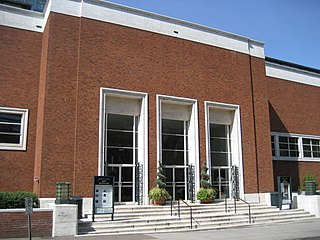
The Portland Art Museum in Portland, Oregon, United States, was founded in 1892, making it the oldest art museum on the West Coast and seventh oldest in the US. Upon completion of the most recent renovations, the Portland Art Museum became one of the 25 largest art museums in the US, at a total of 240,000 square feet, with more than 112,000 square feet of gallery space. The permanent collection has more than 42,000 works of art, and at least one major traveling exhibition is usually on show. The Portland Art Museum features a center for Native American art, a center for Northwest art, a center for modern and contemporary art, permanent exhibitions of Asian art, and an outdoor public sculpture garden. The Northwest Film Center is also a component of Portland Art Museum.
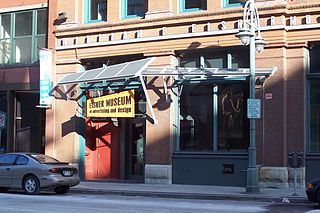
The William F. Eisner Museum of Advertising & Design, or The Eisner, was an advertising museum located in Historic Third Ward in Milwaukee, Wisconsin in the United States.

The High Desert Museum is located near Bend, Oregon, United States. Opened in 1982, it brings regional wildlife, culture, art and natural resources together to promote an understanding of natural and cultural heritage of North America's high desert country. The museum includes indoor and outdoor exhibits of wildlife in natural-like habitats along with traveling exhibits and living history demonstrations. The museum is accredited by the American Alliance of Museums. It is also a Smithsonian Affiliate institution.
David Klein was an American artist, best known for his influential work in advertising. Although he produced illustrations for Broadway theatrical productions, Hollywood films, the United States Army, and numerous corporate clients, Klein is best remembered for the iconic travel images he created for Howard Hughes and Trans World Airlines (TWA) during the 1950s and 1960s.

Washington County Museum is a history museum located in Washington County, Oregon, United States, at the Rock Creek campus of Portland Community College (PCC), north of Beaverton, Oregon. From 2012 to 2017, its public exhibit space was located in downtown Hillsboro, Oregon, before it was moved back to PCC, its pre-2012 location and where the museum's research facility had already been located.

The Oregon Historical Society Museum is a history museum housed at the Oregon Historical Society in downtown Portland, Oregon, United States. The museum was created in 1898 and receives about 44,000 visitors annually.

A velvet painting is a type of painting distinguished by the use of velvet as the support, in place of canvas, paper, or similar materials. The velvet provides an especially dark background against which colors stand out brightly.
Richard Wilhelm Sundeleaf was an American architect from Portland, Oregon, United States. A number of the buildings he designed are listed on the U.S. National Register of Historic Places.
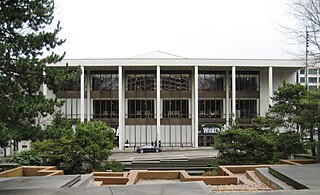
Keller Auditorium, formerly known as the Portland Municipal Auditorium, the Portland Public Auditorium, and the Portland Civic Auditorium, is a performing arts center located on Clay Street in downtown Portland, Oregon, United States. It is part of the Portland's Centers for the Arts. Opened in 1917, the venue first changed names in 1966, being renamed again in 2000 in honor of a $1.5 million renovation donation by Richard B. Keller.
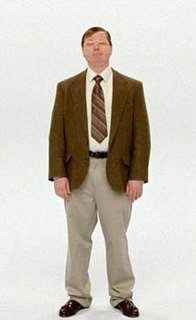
"I'm a PC" is the title for a television advertising campaign created for Microsoft by ad agency Crispin Porter + Bogusky (CPB). The series first began to appear in September, 2008. The new series of commercials replace those that featured the pairing of Jerry Seinfeld and Bill Gates.
James Henry Beard was an American painter who specialized in the genre of portraits. He was elected as a member of the National Academy of Design in 1872.

The 3D Center of Art and Photography is an American nonprofit educational institution in Portland, Oregon that opened in 2003. It was the first museum in the United States dedicated to stereoscopy. From 2003 to 2011, the Center was located in a small leased storefront on NW Lovejoy Street that presented exhibits open to the public. The Center closed its doors to the public on December 31, 2011, due to poor economic conditions and increased rent on its leased premises. The Center is currently engaged in an ongoing fundraising campaign to move to a location that will accommodate large groups of visitors.
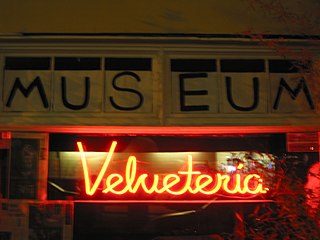
The Velveteria Epicenter of Art Fighting Cultural Deprivation, or Velveteria is a museum located in Los Angeles, California, dedicated to velvet paintings. Originally opened in 2005 in Portland, Oregon, the establishment houses hundreds of paintings from Caren Anderson and Carl Baldwin's personal collection of over 2,000 pieces, and is reportedly the only one of its kind. The Velveteria closed in Portland in January 2010 due to financial difficulties and the couple's relocation to Southern California. It was reopened in Chinatown, Los Angeles in 2013.
Arlene Schnitzer is an arts patron and philanthropist. She is the founder and director of the Fountain Gallery, established in Portland to showcase artists in the Pacific Northwest. She is the namesake of the Arlene Schnitzer Concert Hall, a performing arts center in Portland, Oregon.

The Gypsy Restaurant and Velvet Lounge was a restaurant and nightclub established in 1947 and located along Northwest 21st Avenue in the Northwest District neighborhood of Portland, Oregon, in the United States. Popular with young adults, the restaurant was known for serving fishbowl alcoholic beverages, for its 1950s furnishings, and for hosting karaoke, trivia competitions and goldfish racing tournaments. The restaurant is said to have influenced local alcohol policies; noise complaints and signs of drunken behavior by patrons made the business a target for curfews and closure. Concept Entertainment owned the restaurant from 1992 until 2014, when it was closed unexpectedly.

The Packy mural was a public artwork depicting the elephant of the same name, painted on the Skidmore Fountain Building in Portland, Oregon's Old Town Chinatown neighborhood. The artwork was designed by Eric Larsen and painted in 1990 by North Pacific Sign and Design, but was destroyed during the building's 2008 renovation to become the new headquarters for Mercy Corps.

Movie Madness Video is a video rental shop and museum of film history in Portland, Oregon's Sunnyside neighborhood, in the United States.























